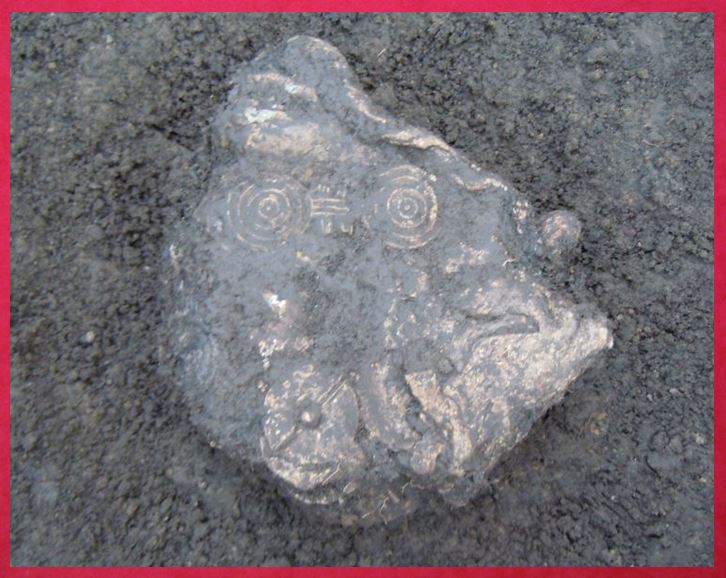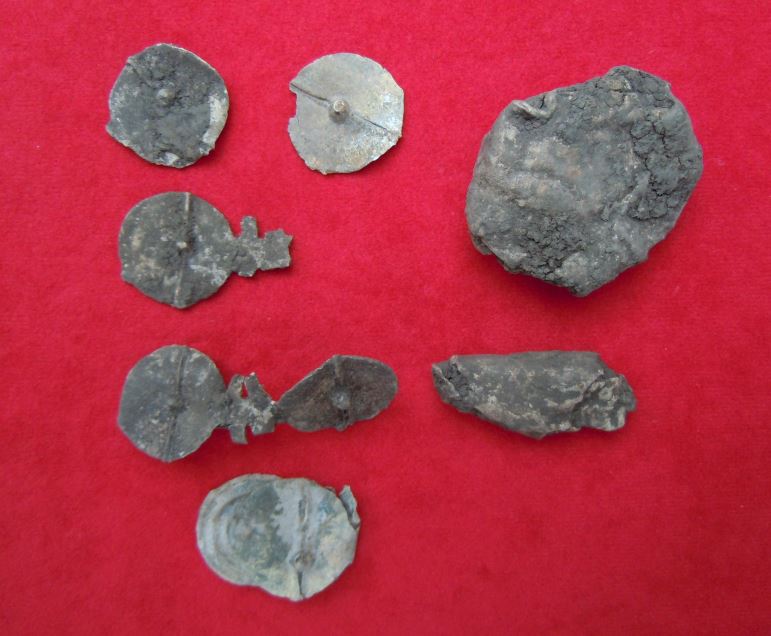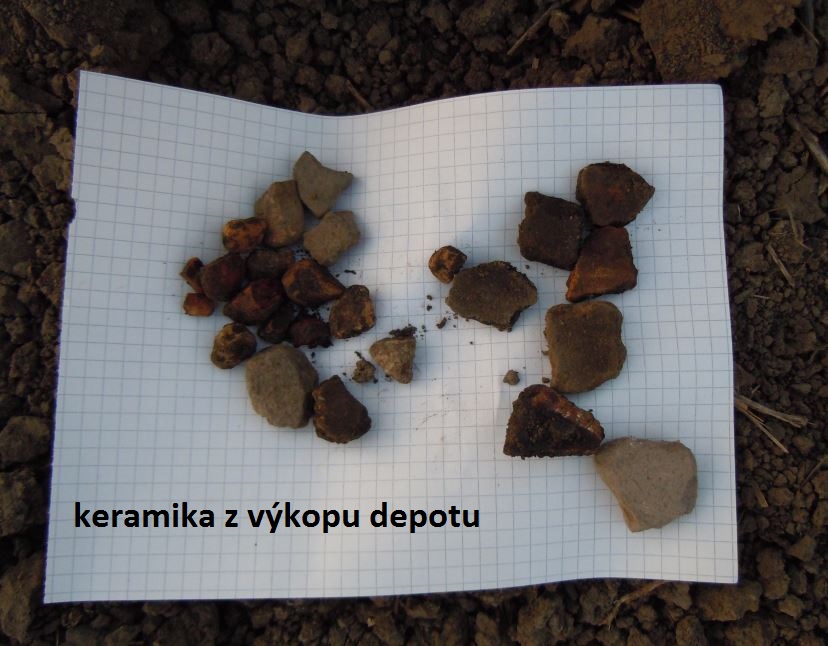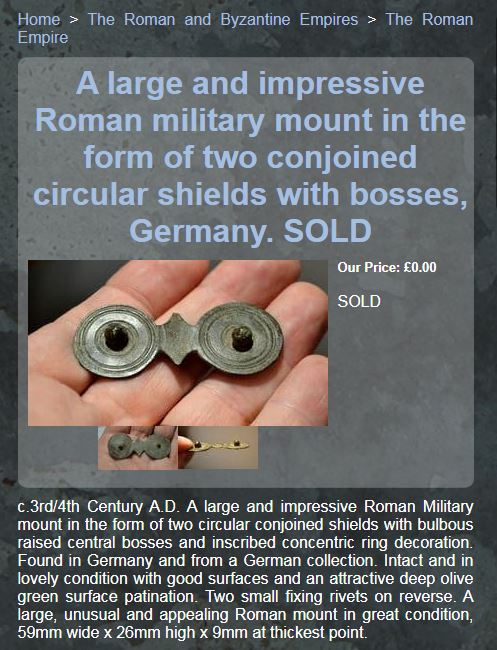Zajímavý nález 
A plea to all archaeologists visiting the LP site
Categories: Finds and rescue research in the Czech Republic
Hello to all archaeologists and fans of this site. I am writing to you with a request. Have any of you come across the artefacts from the picture attachment of this article? If you would forward this query to your colleagues who visit the LP site only occasionally, I would be greatly obliged. If any of you have any information about this find, please contact the archaeologist of the Chrudim Museum, Mgr. Mgr. Nikola Janovska _ janovska@muzeumcr.cz
Of course, I am also asking the searchers themselves. If anyone recognizes something in the find or has encountered something similar, please add it to the discussion below this post.
Thank you all in advance for your time, any opinion or direction in trying to unravel the mystery of this lead depot.
Sincerely, King Martin
Lead depot of double targets.
I picked up a faint signal in the field on Friday morning 8/18/2023. However, as the layer of soil was gradually unearthed, its strength increased. Forty centimetres and still nothing. It was not until further digging that a target appeared in the dirt. It was immediately clear that it was a lead target. The first thing I thought of was a textile weight or a barrel seal. But the back of it isn't smooth, and then there's the six feet of depth. It didn't fit anymore. Slowly I picked out more fluffy soil, which revealed a single twin - two targets connected by a bridge with two wings protruding from each side. In this case I remembered the seals, but again neither side is smooth for the extrusion of the pictorial motif and, more importantly, one target should have a mandrel and the other a circular hole. Again I reject. Then there is another single target, one doubled which is folded, and one lump which appeared to be an ingot but is several targets wrapped in lead sheet. At this point I stop digging and finish cleaning the bottom of the excavated hole. Using the viewfinder, I determine that there is another unit in the ground about twenty centimeters in diameter. There's a twin looking down at me from the bottom and I'm still thinking. Then I think of the resemblance to a Bronze Age eyeglass clasp. But this is lead, not bronze. I call the museum, carefully bury the core of the depot and call it a day. The pickup comes two days later. The core of the depot itself probably contains several dozen of these doublets wrapped in lead sheet. The total weight is about four kilograms and the actual disassembly of the depot has not yet taken place. I was able to secure an XRF test on the metal composition and it is pure lead without any alloying element of tin or antimony. Also very interesting is the nearly five percent content of rare iridium, which is found in the aftermath of a larger meteorite impact. This could play a role in a mass spectrometry test to determine the lead isotope and trace its origin. Over one and a quarter kilograms of pottery shards were collected from the vicinity of the depot, and of the metal finds, a silver denarius tinHadrian's sarcophagus, a Latin pendant, a fragment of a bronze footstool or bracelet, a bronze ring of diamond cross-section and several ingots.
In my research I learned that during the Migration of Nations period, lead was used to make models of jewellery, which were used to make casting moulds. On a foreign website I found a similar bronze artifact dated to the 3rd or 4th century, and in a book I discovered a coincidental relief match to the found targets. It is a relief of a cylindrical foot with a central point and four concentric circles of an oval bronze bowl dated to the 1st century AD.
In any case, none of the contacted archaeologists from eastern Bohemia has encountered anything similar so far, but the most common guess for the time classification is the Middle Ages.
Literature and pictorial appendix:
Artistic craft in prehistoric times_Jan Filip
AD Unicum Antika_Stanislava Kučová a kolektiv
The article is included in categories:
Post
Knoflík?
Hmm, tak to je super zajímavý. Dává smysl, že by něco takovýho existovalo a je zvláštní to takhle vidět poprvý.
Ty dna římskýho nádobí jsou soustružený a spíš souvisej s vedenim tepla. Tam bych spojitost nehledal.
To olovo bych řádil spíše do doby Římské nebo novější. Sleduji a těším se na rozluštění.
Zajímavé. Snad někdo pomůže.
Ano Dome, s tou nádobou to nemá nic společného. Jde tam čistě jen o tu reliéfní shodu. Nic víc. Co je ale jasný, je to, že k výrobě použili minimálně dvě formy, jelikož jeden uvolněný terčík má těch soustředných kruhů pět.
Třeba to chtěli pozlatit a prodat jako zlato .....je to těžký měkký, a technologií už znali.......tak třeba to bylo určeno k podvodu... 
 . Ale vařím z vody....spíš mě to tak napadlo......
. Ale vařím z vody....spíš mě to tak napadlo......
Jsem zvědavý, jestli tohle někdo věrohodně rozlouskne. Je to takový případ, jako "sudové" plomby :)
Projel jsem ty "sudovky" tady a nic takovýho nezahlíd. Je dost divný, že by to tu nikdy předtim nebylo.
Ta zadní strana je mi děsně povědomá a nemůži si vybavit, kde to vídam.
Zadní strana je povědomá, jelikož to známe s knoflů. To tady ale asi nebude ono :)
Zdravím fotka č 3 našel jsem pár grešliček pohromadě asi na jdnom metru 6 kusů a taky podobnej ,,terčíķ,, ale ten se mě rozoadl něco jako druhý kus zleva tak snad to pomůže ale asi ne. 
radas: nejspíše jsi nalezl artefakt určovaný jako textilní závaží viz. koláž
https://ibb.co/bB8QPB3
Děkuju za informacu
https://1url.cz/b1t1k
http://www.bagseals.org/…646
Ahoj Wlady,
ten druhý odkaz mi nejde, ale předpokládám, že tam bude něco od Stuarta. To dohledám podle toho čísla.
Jsem s ním v kontaktu a také se po něčem díval, ale nedohledal. Tak mi poslal alespoň něco k těm plombám.
Musí to být opravdu moc moc fajn člověk a ty jeho stránky miluju.

http://www.bagseals.org/gallery/main.php?g2_itemId=3845
http://www.bagseals.org/gallery/main.php?g2_itemId=12178
Je.Nejvíc mě zabíjí jak pořád chodí v růžovým  No my už jsme přátelé 6 let a je fakt pohodář.
No my už jsme přátelé 6 let a je fakt pohodář.
Vzhledem k tomu, jak je to celé pomačkané a není tam snaha o zachování nějaké "hezké" podoby bych tipoval třeba nějaký typ ingotu použitelného pro další zpracování... na jednom zahraničním výzkumu máme nalezeno velké množství (stovky kusů) olověných ingotů ve formě tyčinek se zploštělým koncem a dírkou... jen takový nápad... vyskytuje se to tam v podobné formě od doby bronzové až do středověku...
pro Sandera: Děkuji za názor, ale domnívám se, že ingot ne. Na to je to moc fešné. S tím vyrytím negativu pro odlití si dal někdo práci hlavně s tím spojovacím můstkem s křidélky. Když vynechám to, že by to byl model pro zhotovení jednorázové formy, napadá mě, že to olovo dostal někdo do ruky, pro koho to byl do té doby neznámý materiál, který se mu dobře zpracovával. Vyrobil xx kusů, ale jako konečný výrobek či pro další zpracování do finálního výrobku to bylo moc moc měkké. Pak si s tím materiálem nevěděl rady k čemu ho použít, a tak to naskládal do středu onoho Pb plechu zabalil a zakopal, třeba protože ten materiál někde odcizil, nebo pro pozdější vyzvednutí. Pár verzí se dá vymyslet.
Domnívám se, že může jít o pozůstatek výroby pomůcky k tavbě okrasných věcí z bronzu. Pomůcka se obalila hlínou a při vypalování formy olovo vyteklo ven. Věci z nálezu mohly mít nějakou vadu pro kterou nebyly k výrobě formy vhodné, naházely se na hromadu, ale z nějakého důvodu už k jejich roztavení nedošlo. Archeologickou sondou kolem místa nálezu by se mohl s velkou pravděpodobností zjistit výskyt pece v blízkém okolí.


































